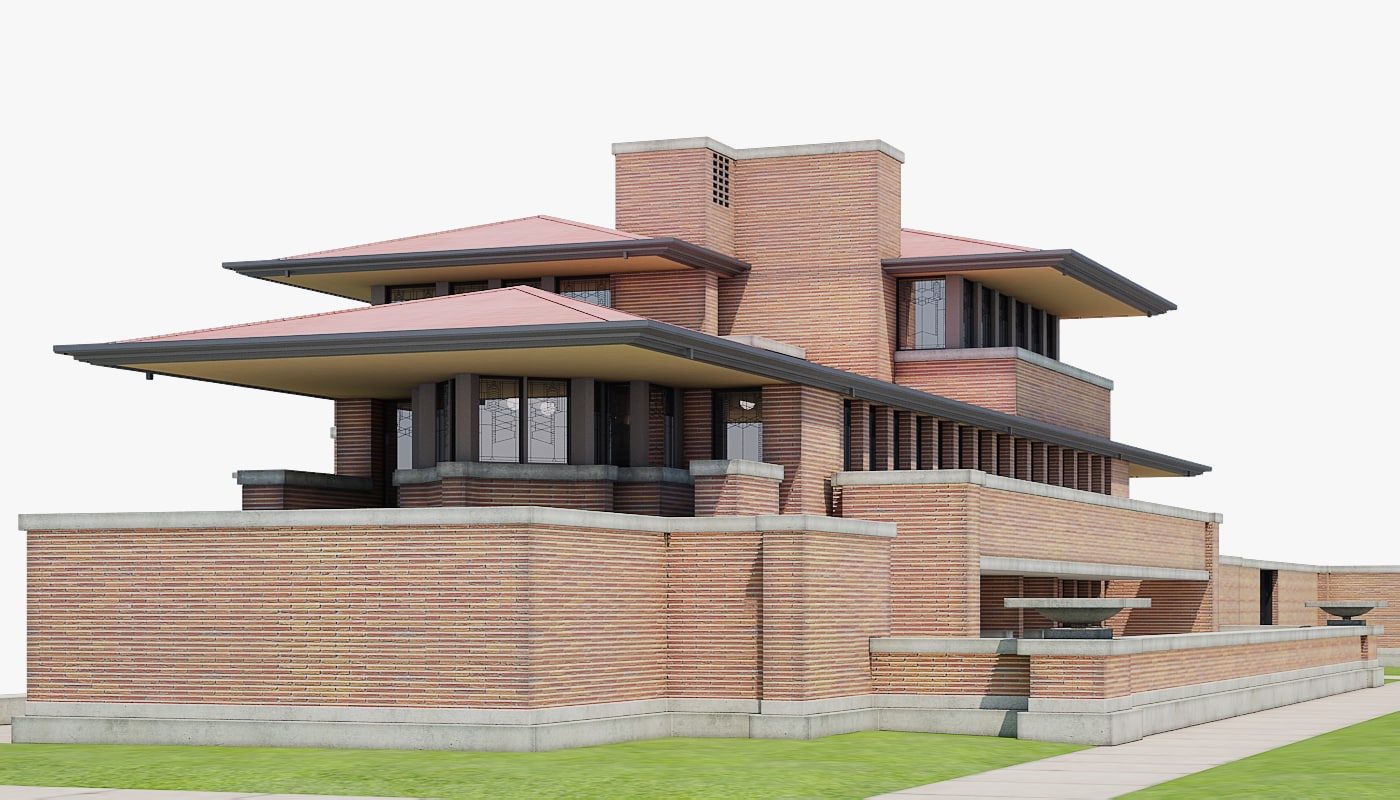Table Of Content

Steel beams in the ceilings and floors carry most of the building's weight to piers at the east and west ends. As a result, the exterior walls have little structural function, and thus are filled with doors and windows containing 174 art glass panels in 29 different designs. Instead of stylized forms from Nature, a favorite Wright motif, geometric forms predominate.
The 36th Annual Grove Park Inn Arts & Crafts Conference 2023
Purchase tickets in advance and then check inat the Museum Shop no later than 15 minutes prior to your scheduled tour orevent time. Late arrivals will join their group in progress and may miss out onimportant parts of the tour. In nicer weather, getting to Robie House on abike is a great option and saves on parking headaches. For Divvy, Chicago’sbike sharing system, a docking station can be found at Ellis Avenue & 58thStreet, just a 6-minute walk from Robie House.
Robie House Named UNESCO World Heritage Site - The Chicago Maroon
Robie House Named UNESCO World Heritage Site.
Posted: Tue, 09 Jul 2019 07:00:00 GMT [source]
THE ULTIMATE PRAIRIE HOUSE
The Robie House is stunning, and its significance in American architectural history cannot be denied. However, the space plan of the home seemed rigid and uncomfortable for me. It may have resulted from the low ceilings and proportion of the interior spaces, which seemed inadequate and cramped. This may have been a product of the time it was built, because they did not build spaces to the scale we do today. One of the key design features is a series of site walls extending out from the home's base.
Key Milan design week installations
At the house's entry is a spacious entry vestibule with low ceilings that allows access to the two entertaining spaces and a series of stairs leading you up to the second level. Outside the entertaining spaces, along the street, is a long rectangular courtyard with a low brick wall to keep the children off the street. Wright would design the enclosed car court accessible off the street that allowed vehicular access to an attached garage. The concept of an attached garage was rare at the time, given the possible combustion from cars. The house was designed for Frederick C. Robie, a bicycle manufacturer, who did not want a home done in the typical Victorian style.
Abstract geometric forms in Wright’s favorite 30- and 60-degree angles are prominently displayed in the 174 art-glass window and door panels. Situated on a narrow, deep lot, the home’s slightly offset pinwheel footprint (above) takes full advantage of its environs. Wright incorporates the lot’s dimensions into the design by making the home over 3 times as long as it is wide, providing the basis for its dominant horizontal Prairie lines. One of the bi-products of this horizontality is the dramatic perspective that’s emphasized when viewing the house along its primary axis (below). The Robie House was officially designated as a National Historic Landmark on November 27, 1963, and was included on the first National Register of Historic Places list of October 15, 1966. In recognition of its architectural significance, the house, along with seven other properties designed by Wright, were inscribed on the World Heritage List under the title “The 20th-Century Architecture of Frank Lloyd Wright” in July 2019.
This was another way that Wright transitioned between building and landscape. For me, the site walls are a defining characteristic and one of my favorite elements of the home. This was an architectural strategy that Wright would use throughout his career. They are beautifully shown in his early drawings, with dense creeping shrubs crawling over the walls as though the building had been there for centuries. Above the main block, the second floor features bedrooms with windows and covered balconies, creating the conflicting dynamic that sets the entire composition in motion. On one side emerges a large vertical chimney that anchors all the horizontal levels below.
Auldbrass Plantation
The natural tones of the color palette, art glass, wooden screens, and red oak furniture and moldings of the entrance hall are seen throughout the rest of the house. A staircase to the right leads to the primary living spaces on the second story, glimpsed beyond oak lattice screens. Throughout his design of the house Wright explored ideas of openness and connection, and he aimed to create a total work of art in which all interior furnishings and fixtures supported his architectural aesthetic. This includes the leaded art glass windows and square wood sconces with opaque glass globes to the built-in cabinetry and free-standing furniture.
Free and Cheap Festivals To Attend in Chicago in the Fall
The westernmost bay of the garage originally contained a mechanic's pit, and the easternmost bay contained equipment to wash and clean automobiles. On the second floor of the minor vessel is a guest bedroom above the entrance hall and an adjoining full bath. East of the back stairway are the kitchen and butler's pantry, and the servants' sitting room. Two bedrooms and a full bathroom above the garage complete the quarters for the live-in servants. While Wright’s Prairie houses are typically horizontal like the Midwest landscape, the Robie House site helped Wright determine the design of the building.
Allowing Accessory Dwelling Units to be added to single-family residences are steadily becoming one of the most notable and widely utilized methods by homeowners all over the state. If you are an Orange County property owner, you may be interested in the new loan program aimed at helping homeowners build an ADU on their property. Orange County Housing Finance Trust has developed a program to encourage property owners to invest in an ADU by providing access to low-interest, deferred, partially forgivable loans for qualified owners.
The all-day architectural experience is held in the historic Chicago suburb of Oak Park, home to more Wright buildings than anywhere in the world. Throughout the house, Wright-designed wall sconces can be found in the shape of a hemispherical shade suspended beneath a square bronze fixture. On the second floor living and dining rooms, spherical globes within wooden squares are integrated into the ceiling trim, further tying the two spaces together visually. Because these lights are all independently operable, different effects can be created within these spaces. Finally, a Wright-designed table lamp with an art glass shade stood on a Wright-designed library table in the living room.
The goal was to highlight modern homes constructed with industrial materials and techniques that could help solve the housing needs after WWII. All the furniture was designed by Wright; the dining table and chairs housed in the dining area were exceedingly popular. The basis of the composition is a long two-story block, with apparently symmetrical porches, each featuring a sloped roof, at each end. On the first floor of the south facade, which faces the street, there is a row of large doors opening onto a large balcony that projects outward from the house. The balcony provides shade to a series of similar windows on the ground floor.
Completed in 1910, the house is recognized today as one of the most important buildings of the 20th century. The Fredrick Robie House is a testament to Frank Lloyd Wright's genius as an architect and designer. It is a magnificent example of Wright's innovative architectural style and is essential to Chicago's cultural landscape. Its unique features make it a must-see for modern architecture and American history enthusiasts. Whether you're visiting Chicago or just learning about historic buildings online, make sure you don't miss out on this iconic piece of history.
Wright created a floor plan of two long rectangles that fit within the narrow dimensions of the lot. He increased the horizontal sweep of the house by using cantilevered roofs that extend beyond the walls at each end. A cantilever is a projecting horizontal structure anchored at only one end, like a diving board. Every element of the design is carefully considered, Wright even uses long, narrow Roman bricks that further emphasize the horizontality of the house. As with all Prairie houses, Wright designed the light fixtures for the Robie House. Wall sconces in the shape of a hemispherical shade suspended beneath a square bronze fixture can be found throughout the house.

On every door in the house, Wright used a custom octagonal door handle which was a thoughtful touch. Together, the unique ideas and experiences these men embodied created a piece of architecture that signified the principles of industrialization and modernity. The bedrooms are at this level, overlooking the house in a sort of tower-style. If you are planning on visiting several tourist attractions during your visit to Chicago, check out the Go Chicago Pass or Explorer Pass, both of them include a tour of the Frank Lloyd Wright Robie House.
Yes, all Trust members receive benefits of the Time Travelers Historical Museum Reciprocal Membership Program, which offers free or discounted admission to more than 250 history and house museums. If studied closely, architecture can provide glimpses into human history. It can give insight into our ancestors' customs, rituals, technologies, religions, and daily life. Architecture can provide a deeper understanding of the evolution and development of the human species.
One notable piece of furniture designed by Wright for the Robie House is a sofa with extended armrests, which echo the cantilevers of the exterior roof, creating side tables on each side of the sofa. The sofa has been on loan to the Metropolitan Museum of Art in New York since 1982 and is on display as part of the furnishings in the reconstructed living room of the Francis W. Little House. Other miniature cantilevers can also be found in the shelves of the built-in dining room buffet and a food preparation island in the kitchen. At Robie House, the main living space is a single, light-filled room divided only by a central chimney.

No comments:
Post a Comment